Excess water retention the issue - perlite the answer?
tapla (mid-Michigan, USDA z5b-6a)
4 years ago
last modified: 4 years ago
Featured Answer
Sort by:Oldest
Comments (32)
nicholsworth Z6 Indianapolis
4 years agolast modified: 4 years agotapla (mid-Michigan, USDA z5b-6a) thanked nicholsworth Z6 Indianapolistapla (mid-Michigan, USDA z5b-6a)
4 years agoRelated Discussions
Container Soils - Water Movement & Retention XIII
Comments (152)Hello Al - thanks again for all of your posts and the fruits of your research. I am growing four heirloom tomato plants in containers using your 5-1-1 mix. Here in Raleigh the closest thing I could find to pine bark fines was a product by Timberline called "Soil Conditioner" which seems to be close to the ideal size. But I wanted to ask you two questions, which I hope you have the time to answer (and patience, if you've already answered them - I looked and could not find your thoughts on these): 1. I used a run of the mill mulch to top off my 5-1-1 mixes in the pots and to my dismay discovered the mulch was full of fungus gnats. I will try Gnatrol to get rid of them, but it brings up my question - what do you use for mulch for the 5-1-1? Maybe pine bark nuggets instead of this buggy shredded hardwood I'm using? (large size might help to avoid insect eggs or other stuff hiding inside?) Or do you not mulch? 2. And secondly, what do you use for day to day pest control? I'm spraying insecticidal soap almost daily to kill the whiteflies/thrips/aphids that I see on the leaves but I wonder if there's anything better I can do instead of using the toxic stuff (Sevin, etc). Thanks!...See MoreContainer Soils - Water Movement and Retention XVII
Comments (202)Exactly, the paper i pasted from describes the same phenom you have been describing for over 10 years. I have always raged that the big greenhouse media suppliers claim that 30% perlite into a peat is a high porosity mix. And so many growers prefer short squatty containers [helpful for blow over prevention but nothing else] Container Geometry is almost as important as the mix. i remember in 1984 I took a 400 level greenhouse management course at University of Delaware. The prof soaked a rectangular sponge and held it by the edges parrallel to the sink flatwise and let water drain, then he rotated the sponge on the shorter vertical axis and more water drained, when that free drainage ended he then rotated the sponge vertically in it tallest plane and more water drained. When I read your suggestion about using a draping shoelace as draining wick to lower the PWT the distance of the wick, I shouted YES at the elegant simple brilliance. In 1977 I grew a marijuana plant in a milk crate full of gravel, the stalk was over 2 inches in diameter [no different than growing in glass.] BTW, in your gritty mix what are the ratios and actual particle size for each component? I would think to use slightly larger particle sizes than i think you were using and i would probably consider using zeolite or a calcined DE or calcined clay. BTW, Ep minerals makes several absorbents both DE and Clay, Calcined or regular as various spill absorbers available in any auto parts store. 5o pounds for about 10 dollars. Don''t know the particle sizes but likely need to be screened to eliminate the fines. The clays are generally calcium bentonite and not sodium bentonite so less sodium and less swelling. I beileve Arcillite and Tuface are calcium bentonites. I was just thinking that decomoposed granite and even bark add no water holding capacity but with DE and Proper sized ceramics you could add more waterholding capacity but still maintain the airspace. The airspace in the ep mineral clay was pretty low when I measured it last, but I did not screen it. Somewhere I have a spreadsheet with AFP, WHC, TP, TPv, etc for over a dozen components and mixes. I have run quite a few in both 16 oz and taller 32 oz cups, [1 liter exactly when filled to rim overflow which makes that size intuitively easy for all the math. I think i found your posts about 3 years ago and then lost them. Am I correct in thinking you have some water release curve data around somewhere. Someone posted some WRC showing that Axis DE or perhaps the Axis clay media held huge amounts of water but easily released over 75% to the plant. TI can not find that post. I was actually searching for Vertical hydraulic conductivity, Capillary Rise and Capillary rate and wicking when your links showed up. The axis DE is like $90 a bag for 50 pounds so i think I could more cheaply reproduce from other products but have to screen. where I live in idaho, there is a Celatom DE plant less than 60 miles away, 2 zeolite mines, a sodium bentonite mine, WHC and Airspace mid 20s in the 2 larger particle sizess. Also the best white pumice [Hess] source mine a few hours away. I had hoped better water holding capacity. I plan on rerunning all the mixes again in a few months now that i have more standardized my process using multiple cup sizes, some of them tamped or shaken to settle, some top watered, some bottom water, measure distance of subsidence if any. I also have a vegetronix tensionometer now and will take additional measures at various depths to measure the exact tension and also verify depth of pWT which i can usually see through the transparent cups if I use a marking dye and saturate from below. Anyway I will share those spreadsheets in the near future If i were to guess, you have some sort of plant and soil science background or some civil engineering background and a love for plants. At any rate, your explanations and examples are some of the best I have ever come across, and your shoelace suggestion is brilliant, truly. i read so much WRONG advice or the wrong analysis for reason why something works or does not work. it is refreshing to come across accurate information Garret Goyette...See MoreContainer Soils - Water Movement and Retention XVI
Comments (164)Hi Al and others, I would appreciate advice on saving sick/dying Picea glauca, in pic.1, please. I bought it on post Xmas sale and it was ~50cm tall, looking healthy, with very bushy top. I repotted it without much root cleaning to keep most original soil with fungus, which I read Picea, like other pines, needs. I planted the rootball with old soil into gritty mix, mostly pine bark fines with seramice, with a bit of gravel, see in pic.2 very "gritty" indeed :); trunk is ~1/2" at the bottom). I used a biggish pot to let it grow freely for a year or two. I also cut the top to encourage lower branches growth but it never happened. Water it when the pot feels light, ~ weekly (it is early autumn here in Sydney) by bottom watering in a bucket, then drain well by keeping the pot at ~45 degrees for a while. Use diluted Nitrosol liquid plant food every two weeks. Keep it on sun for 2-3 hrs, then half shade. Despite all my care (or coz of it ? :), the picea never showed any new growth but started developing warning signs for last 2-3 weeks. Those few thin branches started dying. Their stem turns from brown to greyish-green and gets soggy before dying. See in pic 3&4, that branch in front which is dying now, with grey stem. Other branch died a few days ago. Only three normally looking branches are left. But I am afraid they are facing same fate. Anything I can do to rescue my future picea bonsai at all? Thanks and cheers, Sergey...See MoreCONTAINER SOILS - WATER MOVEMENT and RETENTION XXII
Comments (1044)Over the years, I've saved a ton of word documents that answer common questions. One of those documents is about particle size: Particle Sizes (ideal) In a perfect world, the mineral fraction for use in the gritty mix would range in size from 1/10 - 5/32" (.100 - .156", or 2.5 - 4.0mm). The bark fraction would be slightly larger to allow for some breakdown over the life of the planting ........ from 1/8 - 1/4 is about ideal (.125 - .250" or 3.25 - 6.25mm). For the 5:1:1 mix, particle size should be from dust to 3/8". (0 - .375", or 0 - 4mm), with most of the bark ranging in size from 3/16 - 3/8" ( .188 - .375", or 4.8 - 9.5mm). The perlite should be on the coarse side - something like the all purpose or super coarse shown below. If you read the size gradation next to the images, you'll see the images are misleading as the product appears to be much larger than the size listed in print. starter: 1/16 - 3/32 inch (1.6 - 2.4mm) you can sub #1 cherrystone/quartzite if available grower: 3/32 - 3/16 inch (2.4 - 4.8mm) you can sub #2 cherrystone/quartzite if available developer: 3/16 - 5/16 (4.8 - 8.0mm) you can sub #3 cherrystone/quartzite if available turkey: 5/16 - 7/16 inch (8.0 - 11.0mm) turkey finisher: 7/16 - 5/8 inch (11.0 - 16mm) The last 2 sizes of grit can be used as ballast in the bottom of shallow pots by mixing 3 parts of grit to 1 part of your soil; this, to avoid water perching above the layer. The layer should be as tall/deep as the PWT your soil supports. Skip this if using a properly made gritty mix. Al...See Morepopmama (Colorado, USDA z5)
4 years agotapla (mid-Michigan, USDA z5b-6a) thanked popmama (Colorado, USDA z5)nicholsworth Z6 Indianapolis
4 years agotapla (mid-Michigan, USDA z5b-6a)
4 years agonicholsworth Z6 Indianapolis
4 years agotapla (mid-Michigan, USDA z5b-6a) thanked nicholsworth Z6 Indianapolistapla (mid-Michigan, USDA z5b-6a)
4 years agonicholsworth Z6 Indianapolis
4 years agotapla (mid-Michigan, USDA z5b-6a) thanked nicholsworth Z6 Indianapolistapla (mid-Michigan, USDA z5b-6a)
4 years agoRob Blomquist
4 years agomilton_zone6a_ontario
4 years agogetgoing100_7b_nj
4 years agopopmama (Colorado, USDA z5)
4 years agotapla (mid-Michigan, USDA z5b-6a)
4 years agogetgoing100_7b_nj
4 years agogetgoing100_7b_nj
4 years agogetgoing100_7b_nj
4 years agotropicofcancer (6b SW-PA)
4 years agotapla (mid-Michigan, USDA z5b-6a) thanked tropicofcancer (6b SW-PA)getgoing100_7b_nj
4 years agotropicofcancer (6b SW-PA)
4 years agoMeyermike(Zone 6a Ma.)
4 years agolast modified: 4 years agoTom H
4 years agotropicofcancer (6b SW-PA)
4 years agolast modified: 4 years agoTom H
4 years agocactusmcharris, interior BC Z4/5
4 years agolast modified: 4 years agocactusmcharris, interior BC Z4/5
4 years agolast modified: 4 years agoRob Blomquist
4 years agocactusmcharris, interior BC Z4/5
4 years agotropicofcancer (6b SW-PA)
4 years agotapla (mid-Michigan, USDA z5b-6a) thanked tropicofcancer (6b SW-PA)tapla (mid-Michigan, USDA z5b-6a)
4 years ago
Related Stories

DISASTER PREP & RECOVERYRemodeling After Water Damage: Tips From a Homeowner Who Did It
Learn the crucial steps and coping mechanisms that can help when flooding strikes your home
Full Story
GREEN BUILDINGJust Add Water: Rain Barrel Magic
Take your rainwater storage from practical to beautiful with a new breed of design-friendly rain barrels
Full Story
GREAT HOME PROJECTSHow to Switch to a Tankless Water Heater
New project for a new year: Swap your conventional heater for an energy-saving model — and don’t be fooled by misinformation
Full Story
LIFEThe Top 5 Ways to Save Water at Home
Get on the fast track to preserving a valuable resource and saving money too with these smart, effective strategies
Full Story
HEALTHY HOMEHow to Keep Water Vapor From Ruining Your House and Your Health
We help you find out when it’s happening, what it means and how to fix it
Full Story
GREEN BUILDINGWater Sense for Big Savings
Keep dollars in your pocket and preserve a precious resource with these easy DIY strategies
Full Story
SAVING WATER11 Ways to Save Water at Home
Whether you live in a drought-stricken area or just want to help preserve a precious resource, here are things you can do to use less water
Full Story
BATHROOM DESIGNDreaming of a Spa Tub at Home? Read This Pro Advice First
Before you float away on visions of jets and bubbles and the steamiest water around, consider these very real spa tub issues
Full Story
KITCHEN DESIGNA Cook’s 6 Tips for Buying Kitchen Appliances
An avid home chef answers tricky questions about choosing the right oven, stovetop, vent hood and more
Full Story
HOUSEKEEPINGDishwasher vs. Hand-Washing Debate Finally Solved — Sort Of
Readers in 8 countries weigh in on whether an appliance saves time, water and sanity or if washing by hand is the only saving grace
Full Story



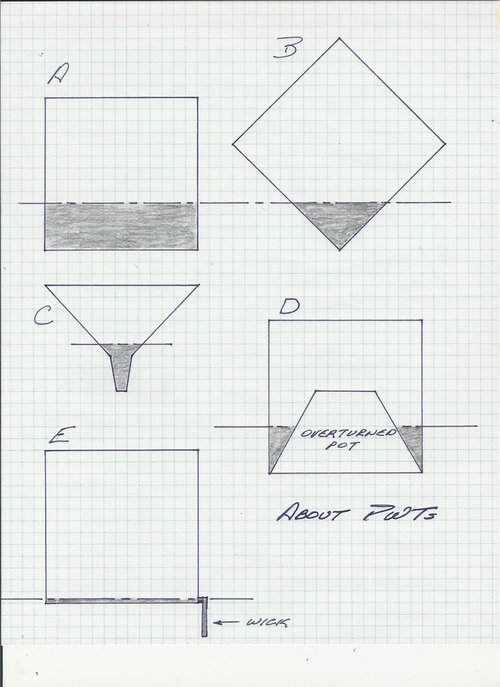
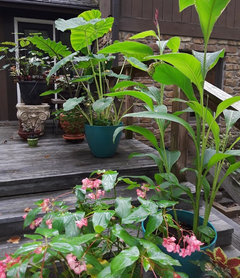
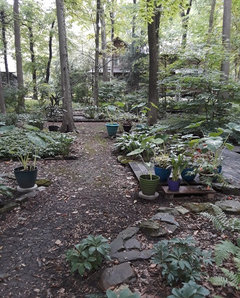
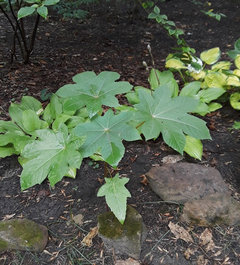
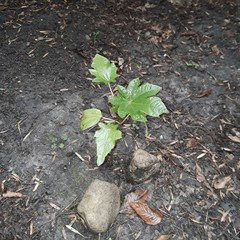


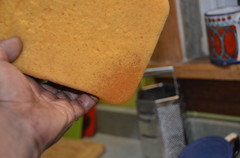



nicholsworth Z6 Indianapolis